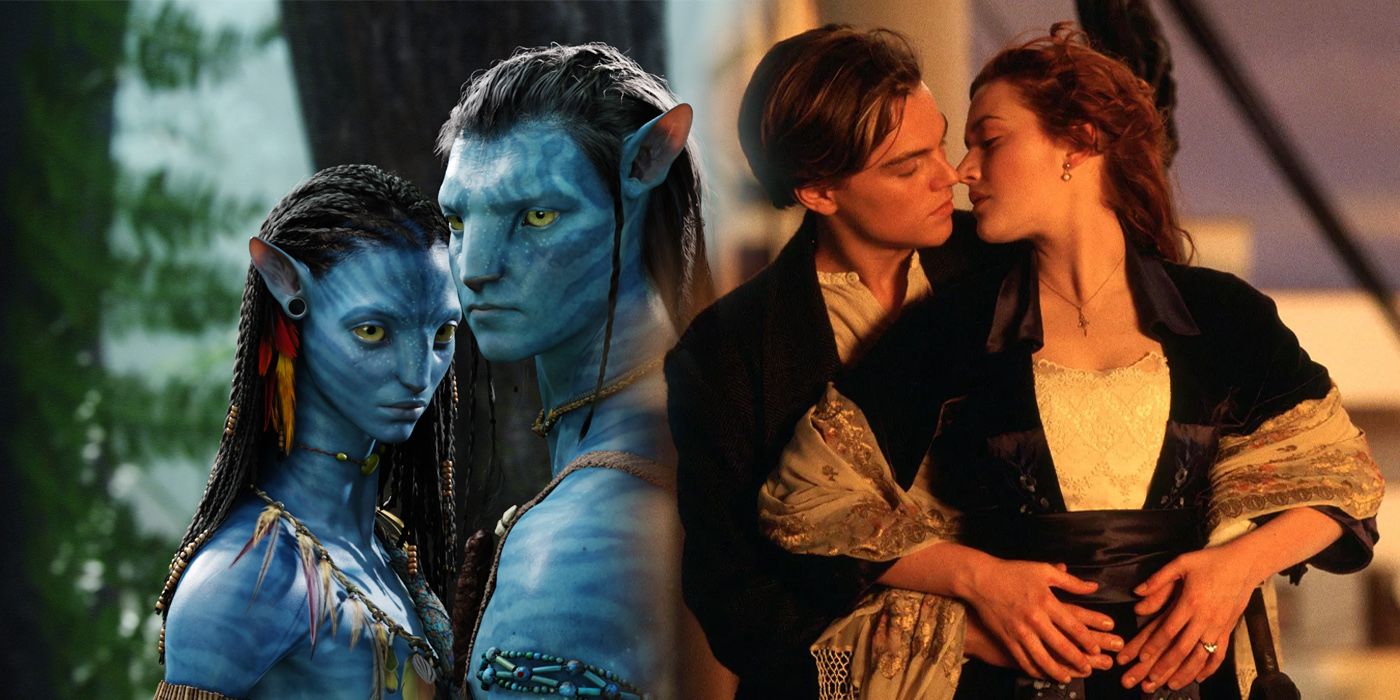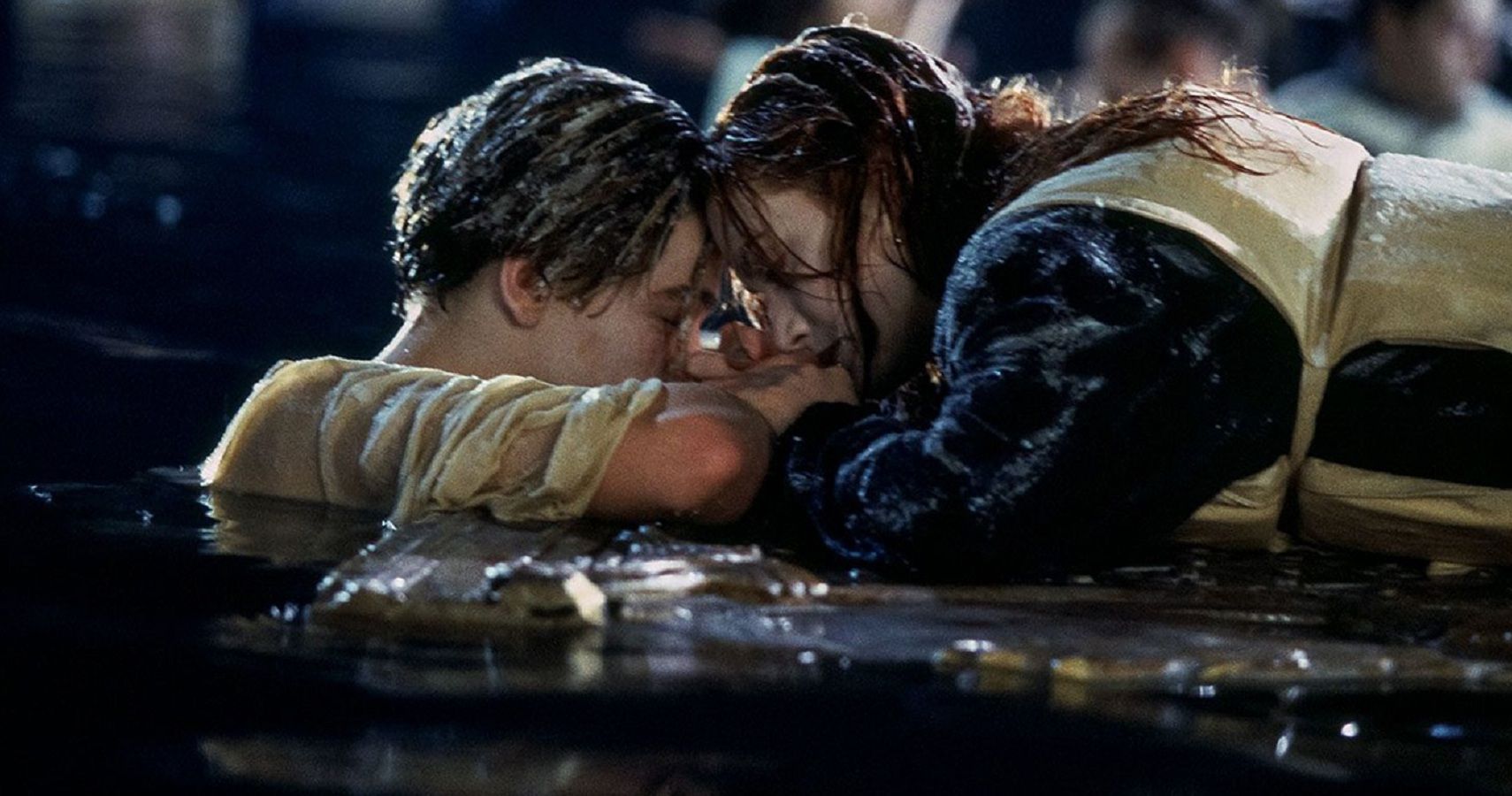James Cameron made two of the biggest movies of all time, but which one has proven to be the most influential: Titanic or Avatar? Time and time again in Hollywood, it has been a foolish decision to bet against James Cameron. While the director's tumultuous reputation precedes him, so does his uncanny ability to make lots of money with high-concept blockbusters that helped to define the genre for several eras of filmmakers. Cameron's influence reaches far and wide across cinema to this day. Despite having only eight feature films on his resume, Cameron has the honor of being the fifth highest-grossing director in the world, ahead of the likes of Christopher Nolan, J.J. Abrams, and Tim Burton. On top of that, he's responsible for two of the highest-grossing movies ever made: 1997's Titanic and 2009's Avatar.
With both of these landmark films, Cameron broke new ground in terms of storytelling and the use of technological advances in the art of movie making. Both films were also widely written off by many in the industry as flops-in-waiting long before they premiered, thanks to overblown budgets, delays, and numerous production problems that were extensively documented in the press. Now, Cameron is hoping to once again prove the doubters wrong by expanding Avatar into a five-film franchise, courtesy of Disney, who now owns the property thanks to their acquisition of 20th Century Fox. The four Avatar sequels are set to cost a combined total of $1 billion, and Cameron has made big promises about further advancing the VFX of the first film to new unseen heights.
It remains to be seen whether Cameron can capture lightning in a bottle once more with the Avatar sequels, but it also seems highly unlikely that they’ll be anywhere near as influential as their predecessors in Cameron’s filmography. Avatar and Titanic changed Hollywood in drastic ways that are easy to downplay or overlook, but which one had the most indelible impact as a whole?
Titanic's Success & What Made It So Influential
Nobody expected 1997's Titanic to be as big a deal as it became. The reported $200 million was seen as near-obscene, the cast was headlined by two young unknowns mostly known for indie projects, and many feared that men wouldn't be seen dead going to the movies for an epic historical romance. It didn't help that the production itself was so fraught thanks to overlong schedules and Cameron’s notorious temper. Many actors, including Kate Winslet, came down with serious colds, bouts of flu, or even kidney infections because of the long hours spent in the giant water tank. Executives at Paramount and 20th Century Fox feared that the inevitable flop would cost them their jobs. The rest, of course, is history.
According to Box Office Mojo, Titanic's worldwide gross totals $2,196,043,167. It held onto the title of the highest-grossing movie ever for 12 years until Avatar turned up, and that took an increase in ticket prices as well as the addition of costs for IMAX and 3D. What made Titanic so successful in its initial theatrical run was a combination of strong reviews, word-of-mouth, and the rewatch factor. The film was playing on 3,200 screens ten weeks after it opened. For fifteen straight weeks, Titanic sat at the top of the box office chart in North America. It helped that the movie's competition for those months was lacking, but that doesn't fully explain those gargantuan numbers. People didn't just go to see Titanic: They went several times and encouraged their friends to do so. The film proved especially enticing to women and teenage girls, two key demographics whose industry power is often ignored or dismissed as less important than that of men. 20th Century Fox estimated that 7% of all adolescent girls in America had seen Titanic at least twice by its fifth week of release [via EW].
It quickly became cool to mock Titanic or claim that it was never really a good film. The movie's success was written off as a fluke or merely the work of hysterical teen girls in love with Leonardo DiCaprio. This dismissive attitude, on top of being casually sexist, overlooks why Titanic was such a stratospheric hit and why the movie is still an excellent piece of filmmaking to this day. Cameron’s screenplay is much more deftly layered than it gets credit for, balancing a romance plot akin to golden age Hollywood classics with the retro thrills of a disaster movie and the true weight of early 20th-century history. He has a real heart for his characters and the worlds they inhabit, even if some of them are more archetypes than fully-fleshed out creations.
The history of the Titanic itself was one of Cameron’s personal obsessions, and his attention to such details is evident in every frame of Titanic. The movie remains truly luscious to look at, even before the ship hits the iceberg and viewers see that jaw-dropping spectacle of White Star Line’s pride and joy sink to the bottom of the Atlantic. Said spectacle is never allowed to overshadow the very real human cost of this disaster. This was a real event and Cameron doesn’t allow the audience to forget that, especially since the movie opens with real-life footage of the then-recently-discovered sunken wreck.
That much-derided love story was what kept audiences hooked and made them invested enough to revisit the film several times in theaters. It’s a simple, oft-told tale — the smothered rich girl falls for the free-spirited boy from the wrong side of the tracks and circumstances tear them apart — but one portrayed with true earnestness and believable chemistry courtesy of Winslet and DiCaprio. Roger Ebert explained its appeal in a 1998 article after Titanic became the highest-grossing film ever:
"The heart of its appeal, I'm convinced, comes in the power of the sacrifice at the end - which Jack makes for Rose because he loves her […] In the clarity of the way "Titanic" prepares us for the ship's sinking, and in the inexorable way the tragedy progresses, the film places us in a situation with fewer and fewer choices, until finally there is only one. Do we identify with Jack or Rose? With both, I argue. With Jack, because we would like to be brave and to sacrifice ourselves for the one we love. And with Rose, because it is a good thing to find true love — to know that someone loved you enough to die for you. That is why the modern story, of Rose when she is 101 years old, is so important. One wants to think that one will be well remembered, and for a long time."
Hollywood immediately tried to replicate the unexpected success of Titanic. For a start, its leading actors became two of the industry’s most popular fixtures, each with a slew of awards under their arms. The James Horner score and the Celine Dion track “My Heart Will Go On” continue to permeate the public consciousness. The film's success certainly helped upcoming disaster movies with romantic subplots stay in the public eye the following year, with both Armageddon and Deep Impact making bank at the box office. For studios, the success of Titanic made them more comfortable with investing large amounts of money into single blockbuster titles more regularly, something that continues to this day. Once upon a time, Titanic’s $200 million budget was absurd; now, it’s practically the norm. The flipside of this is that, as The Guardian noted in 2012, “the event movie […] had stopped being an event.”
After Titanic, Hollywood moved its focus more towards franchises that would allow them to reach growing international markets and spread out that cultural cache across multiple films rather than the singular event. This is the market audiences find themselves in now, in which every single title in the top ten highest-grossing movies of 2019 was either a sequel, remake or reimagining of a major IP, or part of a massive multi-billion-dollar franchise. In that context, Titanic cannot help but feel somewhat special, even compared to its Cameron successor, Avatar.
Every Way Avatar Changed The Movie Industry
Avatar premiered in December 2009, twelve years after Titanic and with an even higher level of expectations mounted upon its shoulders. Cameron’s first film since Titanic — the film had been a dream project of Cameron's since the early '90s — promised immersive state-of-the-art VFX and a level of immerse motion-capture unseen in Hollywood up to that point in history. Everything leading up to the release of Avatar built up the movie as a true Event, the likes of which moviegoers hadn’t truly encountered since Titanic, even in the age of increased nine-figure blockbusters and impressive CGI. Avatar’s event status was further emphasized by its use of 3D and IMAX, promising the kind of viewing experience that couldn’t be replicated at home or even with normal theaters. Like Titanic, Avatar was sold as a movie that everyone had to see.
It was clearly a strategy that worked. Avatar crossed the $1 billion mark on the 19th day of its international release, making it the first film to reach this mark in that amount of time. It quickly became the fifth film ever to gross over $1 billion worldwide, then took the title of becoming the first movie in history to earn over $2 billion. It’s true that cinema tickets were more expensive than they were in 1997 and that audiences paid more to see Avatar in IMAX and 3D, but its success remains impressive, especially in terms of how quickly it made over $2.79 billion worldwide.
Avatar’s lush spectacle had a universal appeal that made it accessible to a wide swath of audiences, particularly worldwide in increasingly lucrative markets like China. While audiences had grown used to seeing blockbusters saturated with special effects, it was in the wholly immersive nature of its world and creatures where Avatar triumphed. Other movies may have done it first, but Cameron did it best, and he made sure everyone knew it. The buzz around the new technology helped to further sell tickets, especially for 3D IMAX screenings, something that hadn’t exactly hooked in many viewers for other lesser movies. As much as Avatar got flack for its derivative story, it was still an original story not based on a pre-existing property or attached to history like Titanic was. Even in 2009, that was an impressive feat, given that six of the year's ten highest-grossing films were either sequels or stories based on pre-existing material. Nowadays, it’s borderline impossible to pull that off.
Avatar helped to pave the road for Hollywood to further invest in all-consuming VFX and motion-capture technology, both of which are so commonly used in cinema that they now no longer surprise us. For a brief time, Avatar’s success also made 3D cinema more viable, although that bubble quickly burst thanks to lazy transfers, color desaturation, and audiences’ irritation with increased costs.
Why Titanic Was More Influential
It’s been 23 years since the release of James Cameron's Titanic — the same age DiCaprio was when the movie came out — and its impact remains crucial. It’s also far and away more beloved by audiences and more positively remembered than Avatar, even though the latter film made more money and premiered only 11 years ago. The flaws of Avatar became more evident as the years passed, and they’re why the film has not lingered in the public imagination to the extent that Titanic or even other blockbusters of that time have. The paper-thin plot and derivative characters were excusable when you watched the film solely as a visual feast, but it didn’t encourage people to rewatch the movie at home on smaller screens. The world of Pandora and the Na’vi didn’t inspire a dedicated fandom or leave behind much of a cultural footprint. By comparison, Titanic remains fresh and distinctive, its flaws less important in the grand scheme of things.
Ultimately, Titanic is a more human endeavor, by design but also in the way audiences latched onto it. Gorgeous effects and ground-breaking technology are all well and good, but it’s a trick one can only pull off once. Movies need to give viewers looking for something to spend their hard-earned cash on a reason to care, and Jack and Rose’s doomed romance set to the backdrop of one of the 20th century’s biggest industrial tragedies brought audiences in hook, line, and sinker.
There’s a reason that the dominant blockbusters of today have more in common with Titanic than Avatar, even if their aesthetic seems to borrow more from the latter. In 2019, Avengers: Endgame overtook Avatar and became the highest-grossing movie of all time. That film had all the makings of a must-see event and made high-concept promises regarding its plot and visuals, but audiences came out in droves to see it because they care about those characters. They’d spent over a decade building up an attachment to that vast ensemble via 22 other films, and they wanted a payoff worthy of their investment. If Endgame had been nothing but impressive CGI then it’s doubtful audiences would have been so enthusiastic about it. That’s a lesson Cameron may need to learn for his Avatar sequels. Fortunately, he can take influence from his own impressive work in that regard.




